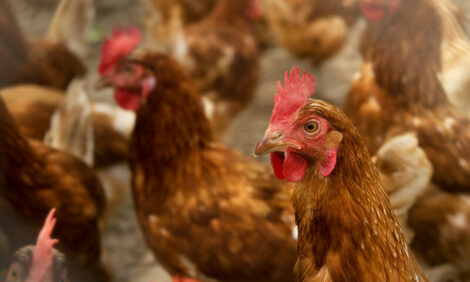



H1N1 and Bird Flu Virus Produce Dangerous Hybrids
HONG KONG - The H1N1 swine flu virus is compatible with a bird flu virus that is endemic in poultry in Asia and they can produce hybrid viruses packed with greater killing power, Chinese researchers warned earlier today.The scientists made 127 hybrid viruses by mixing genes of the H1N1 and the avian H9N2 virus in a laboratory, and eight of the hybrids turned out to be more virulent than either parents when tested in mice.
The H1N1 pandemic of 2009 turned out to be milder than feared and human infections of H9N2 in China in the past are not known to have caused severe disease. But the experts said their hybrid offspring - or "reassortants" - cannot be casually dismissed.
"The main message is that the H1N1 can combine in certain ways with the H9N2 to create reassortants and some of the viruses had an increased pathogenicity comparing with the parent viruses in mice," lead author Jinhua Liu, of the College of Veterinary Medicine at the China Agricultural University in Beijing, wrote in an email to Reuters.
Dr Liu and his colleagues, who published their findings in the Proceedings of the National Academy of Science, warned in their paper: "The possibility of novel pandemic strains being generated from reassortment between avian H9N2 and H1N1/2009 influenza viruses exists."
Flu viruses have eight gene segments and one of the segments is called the PA gene. Interestingly, all eight dangerous hybrids carried the PA gene belonging to the H1N1 parent virus.
The eight hybrid viruses caused severe pneumonia, edema and hemorrhaging in infected mice, the experts wrote.
Dr Liu said their findings underscored the importance of monitoring hybrid viruses that arise from the H9N2 and H1N1.
The H9N2 is prevalent in China and large antibody surveys in the past found that between 13.7 per cent and 37.2 per cent of people sampled had prior infections by the H9N2.
"We should decrease the chance of infection with the two viruses in a (single) host", Dr Liu wrote in his email.
Experts believe that a classic way for hybrid viruses to form is when different viruses meet and "marry" inside a single host, swapping genes. Humans and animals, such as pigs, can be efficient "mixing vessels".
Some scientists believe the pandemics of 1958 and 1968 occurred in such a fashion, killing up to two million and one million people worldwide, respectively.
Further Reading
| - | You can visit the Avian Flu page by clicking here. |











